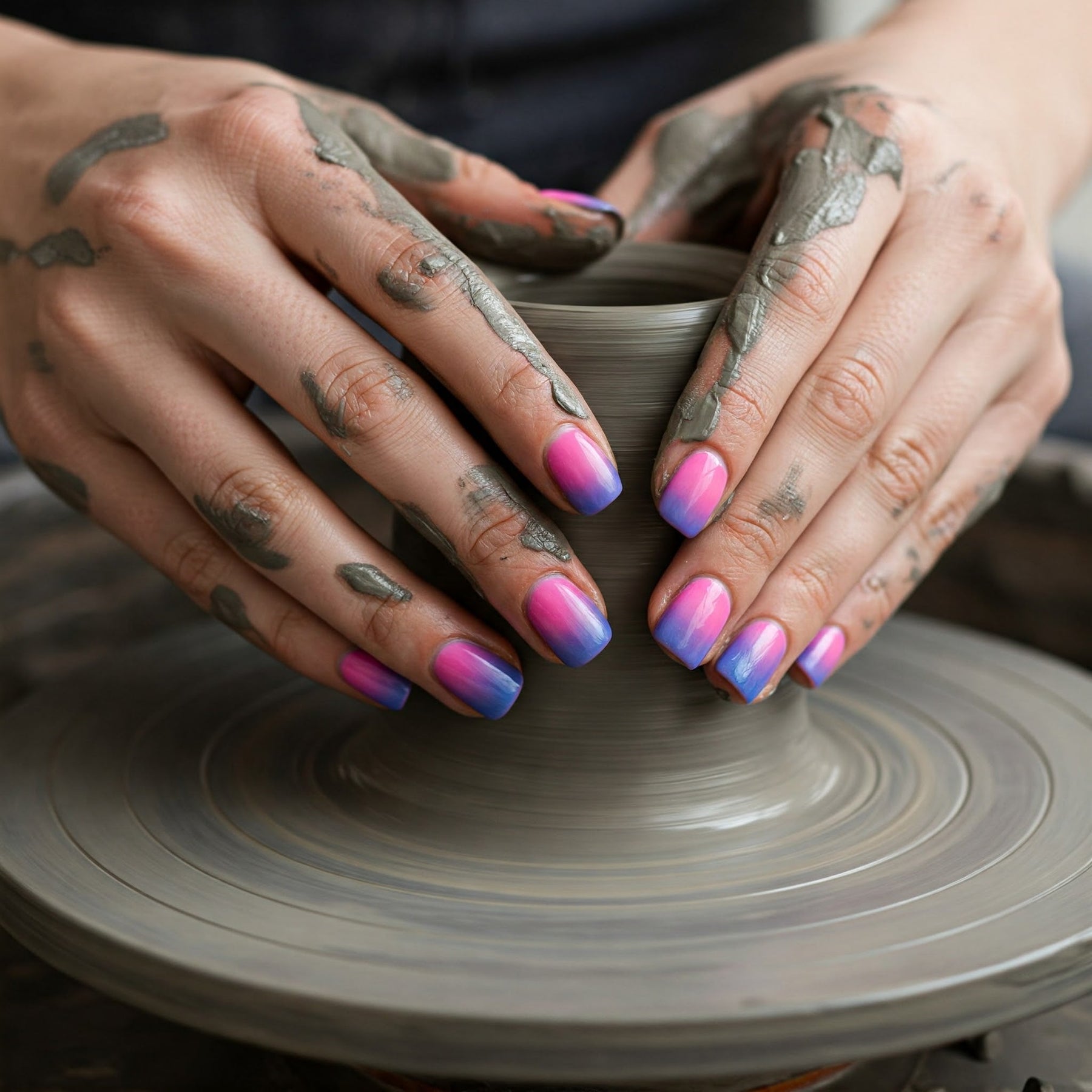
Can You Do Wheel Pottery with Nails? Tips, Tricks & Techniques
Long nails and wheel pottery—are they a match made in clay heaven or a recipe for disaster? Short answer: Yes, you can throw pottery with nails! With clever techniques, tool tweaks, and a little practice, you’ll keep your manicure intact while shaping masterpieces. Keep reading to master Pottery Wheels with Nails!

Understanding the Challenge: Nails and the Pottery Wheel
The Traditional Approach: Short Nails and Clay
For centuries, potters have embraced short nails as the go-to choice for working with clay. There’s a simple reason: it gives them maximum control. Fingertips provide direct feedback, helping shape the clay smoothly and evenly.
With short nails, there’s no risk of accidental gouges or marks. It’s the traditional way, but that doesn’t mean long nails are out of the question—you just need to adapt.
Why Long Nails Pose a Problem
Clay Contact and Control
Imagine sculpting a delicate vase but struggling to feel the clay. Long nails reduce fingertip contact, making it harder to judge thickness, pressure, and symmetry. This can lead to wobbly pots and uneven walls.
Potential for Clay Tears and Marks
Ever scratched wet sand at the beach? That’s what long nails can do to clay. One slip, and you’ve left deep lines or even torn the piece apart.
Hygiene and Cleanliness
Clay loves to sneak under nails, drying into a stubborn mess. If not cleaned properly, it can even harbour bacteria—something no potter wants. Regular scrubbing is a must to keep both your nails and pottery hygienic.
Techniques and Adaptations for Long Nails
Nail Length Considerations
Managing Moderate-Length Nails
If your nails are slightly long, you’re in luck. Simple adjustments—like using the sides of your fingers, adjusting pressure, and being mindful of angles—will keep you in control. Many potters work effortlessly with nails around 5mm long.
Extreme Length: Acrylics and Sculpted Nails
For those sporting dramatic acrylics or ultra-long nails, direct contact with clay isn’t an option. Instead, techniques like using knuckles, palms, and specialist tools will become your best friends.
Protective Measures
Using Gloves (Latex, Nitrile, or Specialised Pottery Gloves)
Wearing thin gloves creates a barrier between nails and clay. Latex and nitrile gloves work well, but some potters find them restrictive. Specialised pottery gloves with reinforced fingertips offer more flexibility.
Nail Caps or Protectors
Silicone nail caps are a great way to protect both your manicure and your pottery. They slip over your nails, allowing you to work without worrying about breakage.
Bandaging or Taping Nails
A quick hack? Wrap your nails in medical tape or fabric plasters. This gives added support and prevents clay from sneaking underneath.
Modified Hand Positions and Techniques
Using Knuckles and Sides of Fingers
Rather than relying on fingertips, use your knuckles and the sides of your fingers to shape the clay. This technique works wonders for centring and smoothing surfaces.
Adjusting Pressure and Touch
With long nails, a lighter touch is key. Avoid pressing too hard to prevent unnecessary stress on your nails—and your clay.
Utilising Tools More Frequently
Sponges, ribs, and modelling sticks can replace a lot of the direct fingerwork. Many experienced potters rely on these even with short nails—it’s all about finding the right balance.
Clay Consistency and Preparation
Softer Clay Bodies
Using softer clay reduces the pressure needed to shape it. This is especially useful for beginners adjusting to long-nail techniques.
Well-Wedged Clay
Properly wedged clay is smoother and easier to control, meaning less need to dig in with fingers.
Tools and Equipment for Nail-Friendly Pottery
Specialised Gloves and Finger Cots
Finger cots—small silicone covers—offer targeted protection for long nails without covering the entire hand.
Longer or Modified Tools
Long-handled trimming tools and extended sponges allow for precision without fingertip contact.
Smooth Pottery Wheels and Surfaces
Keeping your wheel and workspace clean prevents unnecessary snags that could damage nails or pottery.

